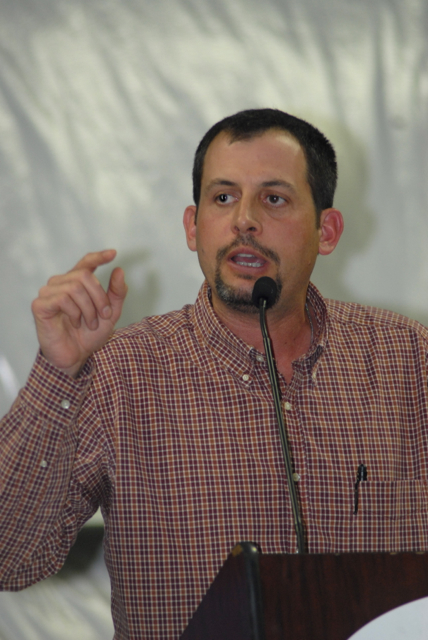The Water Education Foundation Announces Four New Board Members
New Water Education Board Members Includes Sixth Generation Valley Farmer
Jennifer Bowles,executive director of the Water Education Foundation Board of Directors, announced four recently-elected members: Cannon Michael of Bowles Farming Company, Kim Delfino with Defenders of Wildlife, Jennifer Persike with the Association of California Water Agencies and Christopher Park with CDM Smith.
Elected in December, the four will join the rest of the Foundation’s board members at its next meeting in March. Their positions were effective Jan. 1, said Bowles, who is not related to Cannon Michael and his family’s farming operation.
“The staff and current board of the Water Education Foundation are happy to welcome new board members from diverse sectors of the water world,” said Bill Mills, president of the Foundation’s board of directors. “Our new board members will bring a wealth of knowledge and enthusiasm, and we look forward to their input in shaping our bright future.”
The Foundation, an impartial, nonprofit organization, is governed by a volunteer board of 33 members representing a broad cross-section of water, education, business, environmental and public interest communities. Typically, they serve three-year terms. The Foundation’s mission is to create a better understanding of water resources and foster public understanding and resolution of water resource issues through facilitation, education and outreach.
Founded in 1977, the Foundation is a vital source of nonpartisan, in-depth information about water resource issues in California and the West. Taking a steady pulse of the water world, the Foundation provides a vast repertoire of educational materials, products and services such as tours of key water sites in California and Nevada, conferences, flagship bimonthly magazine, Western Water, and Project WET (Water Education for Teachers).
The new board members are:
Cannon Michael: A sixth-generation farmer, Michael is president of Bowles Farming Company headquartered in Los Banos, CA. He oversees an 11,000-acre farm where the company grows cotton, fresh market and processing tomatoes, field crops and other commodities.
Michael’s great-great-great-grandfather was Henry Miller, a German immigrant whose partnership with Charles Lux became known as Miller & Lux and resulted in the build-up of landholdings in the San Joaquin Valley to more than 1 million acres.
Kim Delfino: As the California Director of Defenders of Wildlife, Delfino develops and directs the organization’s work across the state, including determining policy and program work in wildlife, land use, water and energy issues.
She is a gubernatorial-appointed member of the California Water Commission and serves on various coalitions and planning efforts, including the California Roundtable on Agriculture and the Environment, Salton Sea Coalition, the California Rangeland Conservation Coalition and the Desert Renewable Energy Conservation Plan Stakeholder Committee. Her policy expertise lies in state and federal endangered species, land use planning, water and other natural resource laws.
Jennifer Persike: As Deputy Executive Director for external affairs and operations at the Association of California Water Agencies, Persike oversees the association’s teams that work to advance ACWA’s image/brand, issues, policies and delivery of service to members. On the operations side, she oversees the association’s functions and activities related to finance, facilities, human resources, information technology, member services/events, communications and regional outreach
During her 25-year tenure at ACWA, Persike has held the positions of director of strategic coordination and public affairs, director of communications and outreach, director of communications and human resources, and manager of public affairs.
Christopher Park: Christopher Park, American Institute of Certified Planners’ certified, is a Water Resource Planner with CDM Smith in Sacramento.
Park has nine years of experience focusing on environmental impact assessment and permitting for both local and statewide water planning projects for clients that include the Bureau of Reclamation, Federal Emergency Management Agency, U.S. Army Corps of Engineers, the Santa Clara Valley Water District and the Cambria Community Services District.
Park joins the Foundation’s Board of Directors as the representative from the William R. Gianelli Water Leaders Class, of which he was a member in 2014.












